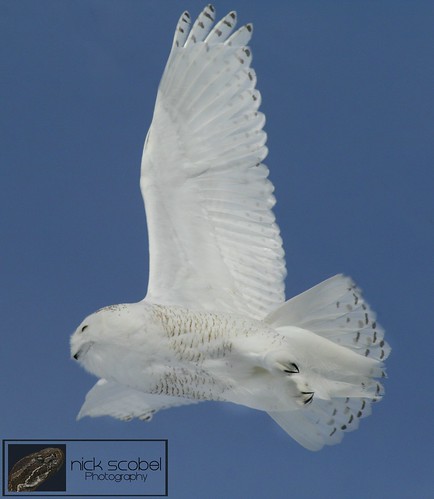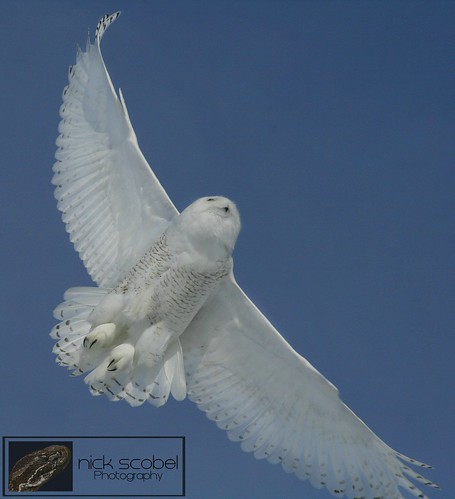"We won't live long enough to see something like this again." That statement is probably true, what's happening this winter is a once in a lifetime type of event. It's no secret that the snowy owl irruption has been nothing short of astounding. Snowies have shown up across the country in record breaking numbers, even as far south as Bermuda and Florida. Audubon Magazine has posted a fantastic article about the invasion, which you can read on the
Audubon Magazine website. So what's so different about this year, why have so many of these mystical birds descended from the Arctic for the winter?
 |
| Snowy Owl (Bubo scandiacus), Gratiot County, MI |
We know that snowy owls are nomadic, often traveling thousands of miles across the arctic to areas where lemming populations are booming. These booms in lemming populations are cyclical, often happening every three to five years. Good years for lemmings in turn are good years for snowies, allowing nesting pairs to raise several youngsters to young adulthood. According to scientists who study snow owls, the summer of 2013 was a banner year for lemmings, leading to huge colonies of breeding snowy owls. This, coupled with early, deep snow in the arctic has created a "perfect storm" which hasn't been seen in more than half a century.
 |
| A snowy rests in the agricultural tundra of Isabella County, MI. |
Being a newbie birder, I remember reading about snowy owls back in November and remember thinking, "I really hope I get to see one this winter!" I guess I couldn't have chose a better winter to become interesting in birding, particularly with owls. There is something striking about these birds, something I can't quite describe. The way they slowly observe their surroundings and then take off with powerful, yet silent wing beats is something one must see for themselves. If you haven't done so already, bundle up, grab your binoculars and make an effort to go out and find one of these owls while they're still around. Many people I've talked to believe they will stick around until mid-March, but it all depends on how quickly things warm up. Check out local birding lists or
eBird for local sightings and be sure to report any sightings you have to either one of these resources. That's all for now, I'll leave you with a few more snowy shots from the past month or so.






No comments:
Post a Comment